
MEMOIRS OF THE AMERICAN MATHEMATICAL SOCIETY
Scope & Guideline
Connecting Mathematicians Through Groundbreaking Studies.
Introduction
Aims and Scopes
- Advanced Mathematical Theories:
The journal focuses on publishing papers that explore and develop advanced theories in mathematics, including but not limited to algebra, geometry, analysis, and number theory. - Interdisciplinary Applications:
Many papers highlight the application of mathematical theories to other fields such as physics, engineering, and economics, demonstrating the interdisciplinary nature of modern mathematical research. - Innovative Methodologies:
The journal encourages the use of innovative mathematical methodologies, including computational techniques, probabilistic models, and topological methods, to address complex mathematical problems. - Research on Algebraic Structures:
A significant portion of the published work involves the study of algebraic structures, including representation theory, group theory, and algebraic geometry, reflecting a strong emphasis on foundational mathematical concepts. - Analysis and Partial Differential Equations:
Research articles often delve into analysis, particularly partial differential equations, exploring their theoretical underpinnings and practical implications. - Geometric and Topological Studies:
The journal features studies that investigate geometric and topological properties of mathematical objects, contributing to both theoretical advancements and practical applications.
Trending and Emerging
- Noncommutative Geometry:
An increase in publications related to noncommutative geometry signifies a growing interest in this field, which offers new perspectives on geometry and its applications in physics and other areas. - Stochastic Processes and Differential Equations:
There is a notable trend towards research involving stochastic processes and their applications in various fields, reflecting the importance of probabilistic models in modern mathematics. - Representation Theory and Algebraic Groups:
Papers focused on representation theory, particularly in the context of algebraic groups and their applications, are becoming more prevalent, showcasing a deeper exploration of these concepts. - Mathematical Physics:
The intersection of mathematics and physics is increasingly represented in the journal, with a growing number of articles that apply mathematical theories to solve complex problems in physics. - Computational Techniques in Mathematics:
There is a rising trend in the application of computational techniques and numerical methods, indicating a shift towards more practical and applicable mathematical research.
Declining or Waning
- Classical Analysis:
Papers focused on classical analysis techniques, such as Fourier analysis and classical function theory, appear to have decreased, possibly due to the rise of more modern analytical approaches and computational methods. - Elementary Number Theory:
Research in elementary number theory seems to be less prominent in recent publications, which may indicate a shift towards more complex areas of number theory or algebraic geometry. - Traditional Algebraic Structures:
Topics that deal specifically with traditional algebraic structures, such as basic group theory without further applications or developments, are becoming less frequent as the community leans towards more advanced and applied algebraic studies. - Basic Geometric Constructions:
Papers that explore basic geometric constructions and elementary geometric proofs have diminished, as researchers increasingly focus on higher-dimensional and more abstract geometric theories. - Historical Mathematical Research:
There seems to be a waning interest in historical perspectives of mathematical theories, with fewer papers dedicated to the history and evolution of mathematical concepts.
Similar Journals

INDIANA UNIVERSITY MATHEMATICS JOURNAL
Charting the Course of Mathematical DiscoveryINDIANA UNIVERSITY MATHEMATICS JOURNAL is a prominent scholarly publication dedicated to the field of mathematics, characterized by its commitment to advancing academic discourse and research. Published by Indiana University, this journal provides a platform for the dissemination of original research, including innovative theories and methodologies in various areas of mathematics. With an esteemed impact factor placing it in the Q1 category for miscellaneous mathematics and a Scopus rank of #106 out of 399, this journal is recognized for its rigorous peer-review process and high-quality contributions, appealing exclusively to researchers, professionals, and students seeking to expand their knowledge. Although it currently does not offer open access, its extensive archive ranging from 1970 to the present allows for a rich exploration of past and current mathematical explorations. For those looking to stay at the forefront of mathematical research, INDIANA UNIVERSITY MATHEMATICS JOURNAL remains an essential resource in the academic landscape.
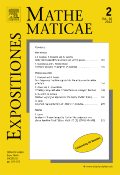
EXPOSITIONES MATHEMATICAE
Connecting Scholars Through Mathematical InsightsEXPOSITIONES MATHEMATICAE, published by Elsevier GmbH, stands as a significant journal in the realm of mathematics, catering primarily to researchers, professionals, and students. With an ISSN of 0723-0869 and an E-ISSN of 1878-0792, this journal has made its mark in the academic community, boasting a Q2 classification in the miscellaneous mathematics category for 2023, illustrating its prominence within its field. The journal addresses a diverse scope of mathematical topics, encouraging the publication of original research and innovative theories while maintaining rigorous academic standards. As it converges from 2004 to 2024, EXPOSITIONES MATHEMATICAE continues to be an essential resource for advancing mathematical knowledge and fostering scholarly communication, despite being a non-open-access publication. Its location in Munich, Germany further anchors it within a rich intellectual tradition, providing accessibility for the mathematical community worldwide.

Pure and Applied Mathematics Quarterly
Connecting Mathematicians Through Quality ResearchPure and Applied Mathematics Quarterly is a prestigious journal published by INT PRESS BOSTON, INC, focusing on the diverse and evolving field of mathematics. Since its inception in 2007, this journal has grown significantly, currently holding a Q1 ranking in the Mathematics (Miscellaneous) category for 2023, positioning it among the leading publications in the discipline. With a commitment to publishing high-quality research, Pure and Applied Mathematics Quarterly fosters innovation and dialogue within the mathematical community by providing a platform for theoretical advancements and practical applications. The journal remains accessible to researchers and professionals through its ISSN 1558-8599 and E-ISSN 1558-8602, although it does not currently offer open access. As a vital resource for mathematicians, educators, and students, this journal endeavors to expand the frontiers of mathematical knowledge and contribute to the academic dialogue surrounding this fundamental science.
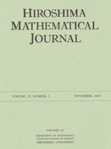
Hiroshima Mathematical Journal
Cultivating Excellence in the Mathematical CommunityThe Hiroshima Mathematical Journal, published by Hiroshima University, Graduate School of Science, serves as a prominent platform for disseminating high-quality research in the field of mathematics. Established in 1959, the journal has been an integral part of the mathematical community, focusing on areas such as Algebra, Number Theory, Analysis, and Geometry and Topology. Although currently classified in Q4 quartile rankings within its categories, the journal is committed to advancing mathematical knowledge and fostering scholarly dialogue. Its accessibility, combined with its long-standing history, makes it an essential resource for researchers, professionals, and students dedicated to exploring and enhancing the mathematical sciences. For those interested in contributing or accessing cutting-edge research, the Hiroshima Mathematical Journal continues to uphold its mission of excellence in mathematical scholarship.
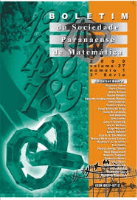
Boletim Sociedade Paranaense de Matematica
Unlocking the Future of Mathematical InquiryBoletim Sociedade Paranaense de Matematica is a distinguished journal within the field of Mathematics, published by the Sociedade Paranaense de Matemática in Brazil. With an ISSN of 0037-8712 and an E-ISSN of 2175-1188, this journal has been committed to fostering open access to mathematical research since 2002, ensuring that cutting-edge research is readily available to the academic community. Operating within the diverse landscape of mathematical studies and ranked Q3 for 2023 in the category of Mathematics (Miscellaneous), the journal serves as a platform for innovative contributions and discussions. It ranks 192nd out of 399 in the Scopus database for General Mathematics, reflecting its steady involvement in the global academic dialogue. The Boletim resides at JD AMERICAS, CAIXA POSTAL 19081, CURITIBA PR 81531-990, Brazil, and aims to connect researchers, practitioners, and students by promoting high-quality research and dissemination of mathematical knowledge. By bridging diverse mathematical theories and applications, the journal not only enhances understanding of the discipline but also drives future research directions.

PUBLICATIONS OF THE RESEARCH INSTITUTE FOR MATHEMATICAL SCIENCES
Advancing Mathematical Knowledge Since 1969Publications of the Research Institute for Mathematical Sciences, ISSN: 0034-5318, E-ISSN: 1663-4926, is a distinguished academic journal published by the European Mathematical Society. Since its inception in 1969, this journal has emerged as a pivotal platform for disseminating high-quality research in the field of mathematics, achieving a notable position in the top quartile (Q1) of the Mathematics (miscellaneous) category as of 2023. With a current Scopus Rank of #121 out of 399, placing it within the 69th percentile for general mathematics, the journal serves as an essential resource for researchers, professionals, and students alike. It aims to foster the advancement of mathematical science through innovative research and comprehensive studies that encourage scholarly dialogue and collaboration. While access options may vary, the journal remains committed to enhancing the visibility and impact of mathematics research on a global scale. Based in Germany, at the Technische Universität Berlin, it continues to uphold a legacy of academic excellence and rigor in mathematical inquiry.
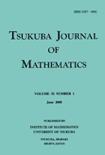
Tsukuba Journal of Mathematics
Fostering Innovation in Mathematics through Scholarly ExchangeTsukuba Journal of Mathematics is a distinguished publication dedicated to advancing the field of mathematics through the dissemination of innovative research and comprehensive studies. Published by the University of Tsukuba, Department of Mathematics, this journal serves as a vital platform for mathematicians, researchers, and students to engage with cutting-edge mathematical theories and methodologies. Although currently not available as an open-access journal, it maintains a strong academic presence, contributing significantly to the global mathematical landscape. The journal invites submissions across various branches of mathematics, aiming to foster scholarly communication and collaboration. The ISSN 0387-4982 and the E-ISSN 2423-821X further establish its credibility and accessibility among the academic community, supporting its critical objective of facilitating high-quality research output. Situated in Tsukuba, Japan, a hub for scientific research and development, the Tsukuba Journal of Mathematics is committed to bridging gaps in mathematical knowledge and encouraging exploration of novel ideas.

Revista Matematica Complutense
Pioneering Insights in the Field of MathematicsRevista Matematica Complutense is a prestigious peer-reviewed journal published by SPRINGER-VERLAG ITALIA SRL, specializing in the field of mathematics. With its ISSN 1139-1138 and E-ISSN 1988-2807, the journal plays a vital role in disseminating high-quality research and fostering academic discussion within the mathematics community. Recognized for its rigorous selection process, the journal has achieved impressive rankings, holding a Q1 quartile status in the miscellaneous mathematics category as of 2023 and ranking #94 out of 399 in general mathematics according to Scopus, placing it within the 76th percentile. With a publication timeline spanning from 2008 to 2024, the Revista Matematica Complutense continues to serve as an essential resource for researchers, professionals, and students alike. Although it does not currently offer open access, the journal remains committed to advancing mathematical knowledge and providing a platform for innovative research across various mathematical disciplines.
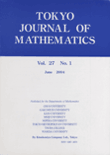
Tokyo Journal of Mathematics
Pioneering Insights in the World of MathematicsTokyo Journal of Mathematics is a prestigious journal dedicated to the dissemination of high-quality research in the field of mathematics. Founded in 1978, this journal serves as a platform for researchers to publish their findings, providing cutting-edge insights into various mathematical theories and applications. Published by the TOKYO JOURNAL MATHEMATICS EDITORIAL OFFICE ACAD CENTER, the journal is based in Japan and forms an integral part of the global mathematical community. Although listed in the Q4 quartile of Mathematics (Miscellaneous) category for 2023, its inclusion in Scopus rankings highlights its ongoing commitment to scholarly excellence. The journal does not currently offer Open Access options, thus providing readers with insightful access to critical advancements in mathematics. With an ISSN of 0387-3870 and a publication history spanning over four decades, the Tokyo Journal of Mathematics remains an essential resource for researchers, professionals, and students alike, fostering the advancement of mathematical knowledge and collaboration across borders.
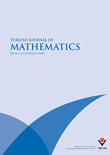
Turkish Journal of Mathematics
Exploring the Depths of Mathematical KnowledgeTurkish Journal of Mathematics is a prestigious academic publication dedicated to the advancement of mathematical research across a variety of subfields. Established in 1995 and published by the Tubitak Scientific & Technological Research Council Turkey, this journal has built a solid reputation, especially noted for its significant contributions to the field over the years, with its convergence spanning from 1995 to 2002 and again from 2006 to 2024. The journal, which holds a commendable Q2 ranking in Mathematics (miscellaneous) and is positioned in the 66th percentile of Scopus rankings for General Mathematics, aims to disseminate high-quality original research, reviews, and innovative methodologies to advance both theoretical and applied mathematics. Researchers, professionals, and students alike will find invaluable resources within its pages, providing insights that are pivotal for academic and practical applications in mathematics. Although it does not currently offer open access options, the journal remains an essential platform for those looking to engage with the forefront of mathematical inquiry.